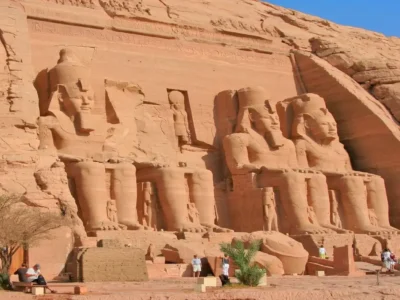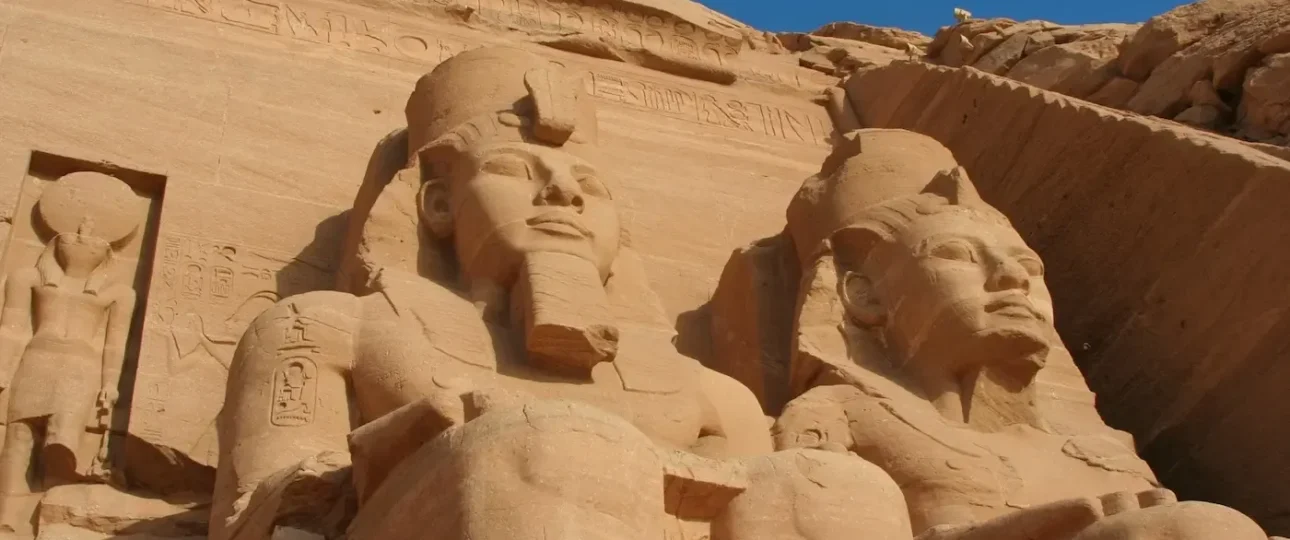The History of Abu Simbel Temple
Unlocking the Mysteries of Abu Simbel Temple: A Journey Through Its History
Abu Simbel Temple is one of the most iconic landmarks of ancient Egypt and a testament to the greatness of its civilization. This awe-inspiring temple complex, which dates back to the 13th century BC, showcases remarkable architecture and intricate carvings that tell the story of a powerful pharaoh and his legacy. In this article, we will take a journey through the history of Abu Simbel Temple and explore its cultural and historical significance.
The Origins of Abu Simbel Temple:
Abu Simbel Temple was built during the reign of Pharaoh Ramesses II, one of the most powerful and prolific pharaohs of ancient Egypt. It was constructed in the 13th century BC as a lasting monument to the pharaoh’s greatness and his divine right to rule. The temple complex comprises two massive temples: the Great Temple of Ramesses II and the smaller Temple of Hathor, the goddess of love and beauty.
The Great Temple of Ramesses II is the most impressive structure in the complex, featuring four colossal statues of the pharaoh himself, each standing at a height of over 20 meters. The temple’s façade is adorned with intricate carvings and hieroglyphics that depict scenes from the pharaoh’s life and military conquests, as well as his divine status as a god-king. Inside the temple, there are several halls and chambers, each with its own set of impressive carvings and decorations.
The smaller Temple of Hathor, dedicated to the goddess of love and beauty, is located adjacent to the Great Temple of Ramesses II. Although it is smaller in size, it is no less impressive, featuring carvings and decorations that celebrate the goddess and her role in Egyptian mythology.

The Cultural and Historical Significance of Abu Simbel Temple:
Abu Simbel Temple is not only an impressive feat of ancient engineering and artistry, but it also has great cultural and historical significance. The temple complex is a testament to the religious and political beliefs of ancient Egypt, showcasing the pharaoh’s divine right to rule and his relationship with the gods. It also serves as a reminder of the power and influence of ancient Egypt, which was one of the most advanced and sophisticated civilizations of its time.
Abu Simbel Temple is also significant because of its location. The temple complex is located near the border between Egypt and Nubia, a region that was historically contested by the two civilizations. The temple’s construction was a deliberate act of propaganda by Pharaoh Ramesses II, who sought to assert his authority over the region and intimidate his enemies. The temple’s location also made it an important landmark for travelers and traders passing through the area, serving as a symbol of Egyptian power and influence.
Conclusion:
Abu Simbel Temple is a remarkable testament to the greatness of ancient Egyptian civilization, showcasing impressive architecture and intricate carvings that tell the story of a powerful pharaoh and his legacy. It is also significant for its role in preserving history and cultural heritage. The temples have withstood the test of time and have been a source of wonder and inspiration for centuries. As visitors marvel at the sheer scale of the temples and their stunning artwork, they can’t help but feel a deep sense of awe and respect for the ancient Egyptians who created them.
A visit to Abu Simbel Temple is a must for anyone interested in history, architecture, or art. It is a unique opportunity to step back in time and experience the grandeur and majesty of ancient Egypt firsthand. From the massive statues of Ramses II to the detailed carvings on the walls, every inch of this temple complex is a masterpiece in its own right.
Whether you’re an Egyptologist or simply a curious traveler, Abu Simbel Temple is a destination that should not be missed. So, book your trip today and embark on an unforgettable journey to one of the most awe-inspiring places on earth.

